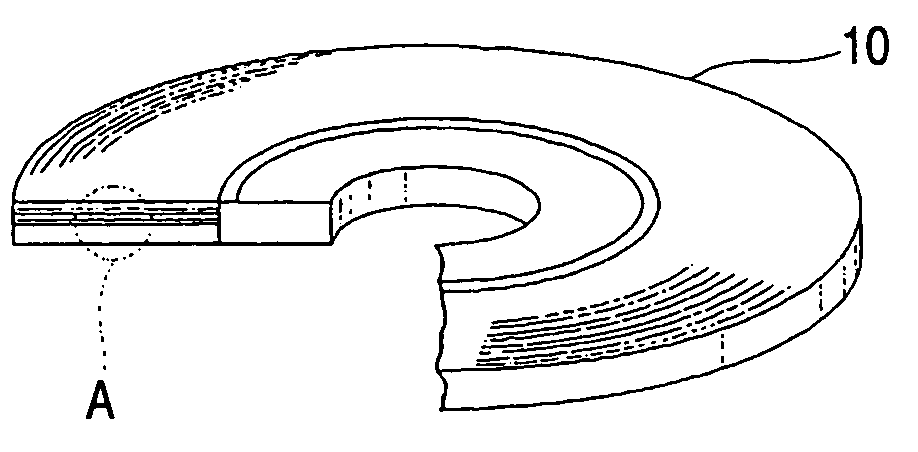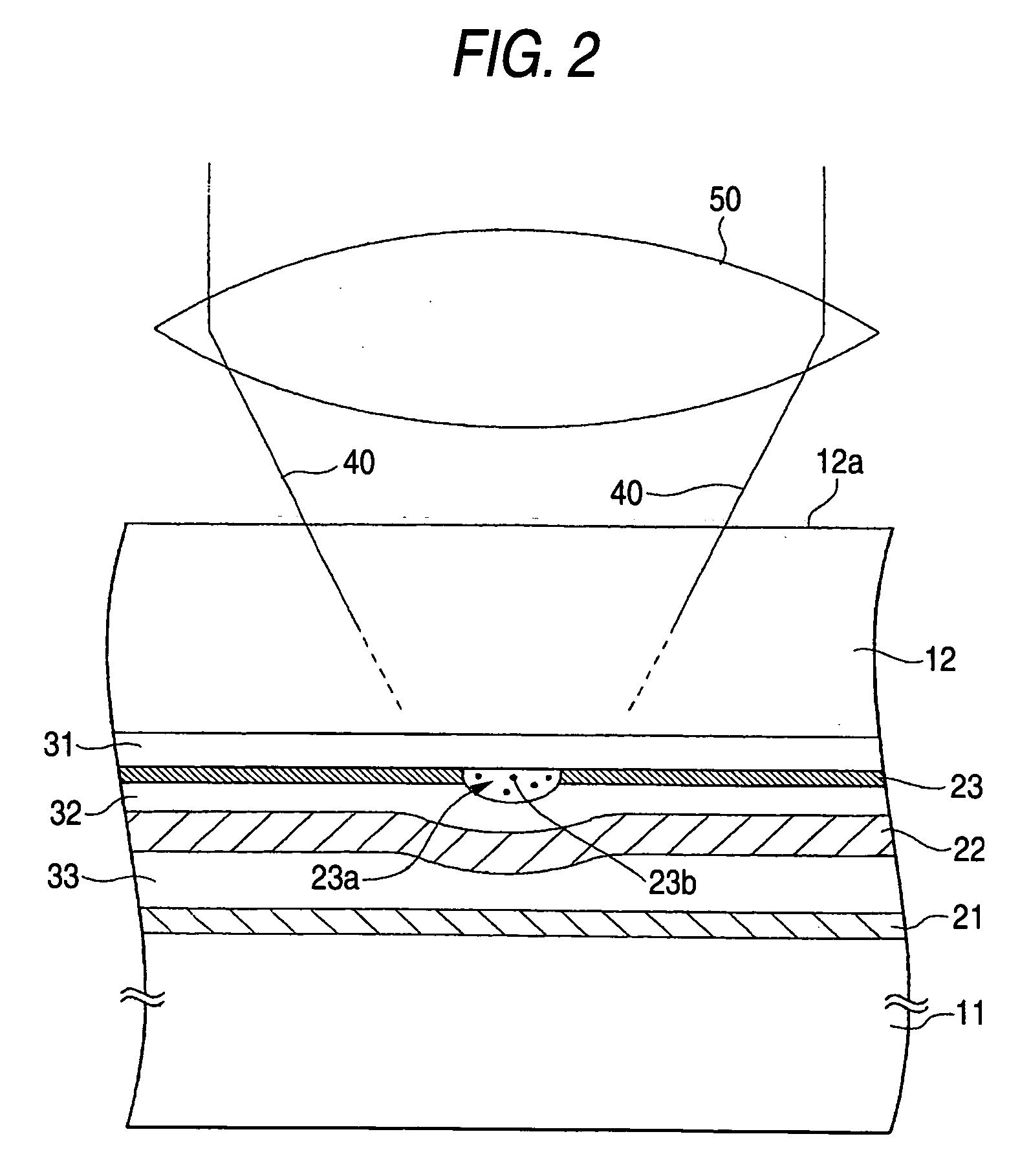Optical recording medium and process for producing the same, and data recording method and data reproducing method for optical recording medium
a recording medium and optical recording technology, applied in optical recording/reproducing/erasing methods, instruments, thermography, etc., can solve the problems of increasing and affecting the quality of the recording medium. , to achieve the effect of high storage reliability, reducing the cost of developing and manufacturing the recording/reproducing device, and reducing the cost of production
- Summary
- Abstract
- Description
- Claims
- Application Information
AI Technical Summary
Benefits of technology
Problems solved by technology
Method used
Image
Examples
embodiments
[0104] Embodiments of the present invention will be described hereunder. However, the present invention is not limited to the embodiments.
[0105] [Manufacture of Samples]
first embodiment
[0106] An optical recording medium sample having the same structure as that of the optical recording medium 10 shown in FIG. 1 was manufactured by the following method.
[0107] First, the disc-shaped support substrate 11, which has a thickness of about 1.1 mm, a diameter of about 120 mm, and the grooves 11a and the lands 11b formed in a front face of the substrate, was formed from polycarbonate by means of injection molding.
[0108] Next, the support substrate 11 was set in a sputtering system. In the side of the support substrate where the groove 11a and the land 11b are formed, there were sequentially formed the reflection layer 21 which is formed essentially from platinum (Pt) and has a thickness of about 20 nm; the dielectric layer 33 which is formed essentially from a mixture consisting of ZnS and SiO2 (a mol ratio of about 80:20) and has a thickness of about 80 nm; the light absorption layer 22 which is formed essentially from AgaInbSbcTed (a=5.9, b=4.4, c=61.1, d=28.6) and has ...
second embodiment
[0111] The thickness of the dielectric layer 33 was set to about 100 nm, and the thickness of the noble metal nitride layer 23 was set to about 4 nm. In other respects, an optical recording medium sample of a second embodiment was produced in the same manner as was the optical recording medium sample of the first embodiment.
[0112] [First Evaluation of Characteristic]
[0113] First, the optical recording medium sample of the first embodiment and that of the second embodiment were set in an optical disk evaluation system (DDU1000 manufactured by Pulstec Industrial Co., Ltd.). While the optical recording medium was being rotated at a linear velocity of about 6.0 m / s, a laser beam having a wavelength of about 405 nm was irradiated onto the noble metal nitride layers 23 from the light entrance faces 12a by way of an objective lens having a numerical aperture of about 0.85, to thus record a single frequency signal having a predetermined record mark length and a blank length. The record mar...
PUM
| Property | Measurement | Unit |
|---|---|---|
| thickness | aaaaa | aaaaa |
| thickness | aaaaa | aaaaa |
| thickness | aaaaa | aaaaa |
Abstract
Description
Claims
Application Information
 Login to View More
Login to View More - R&D
- Intellectual Property
- Life Sciences
- Materials
- Tech Scout
- Unparalleled Data Quality
- Higher Quality Content
- 60% Fewer Hallucinations
Browse by: Latest US Patents, China's latest patents, Technical Efficacy Thesaurus, Application Domain, Technology Topic, Popular Technical Reports.
© 2025 PatSnap. All rights reserved.Legal|Privacy policy|Modern Slavery Act Transparency Statement|Sitemap|About US| Contact US: help@patsnap.com



